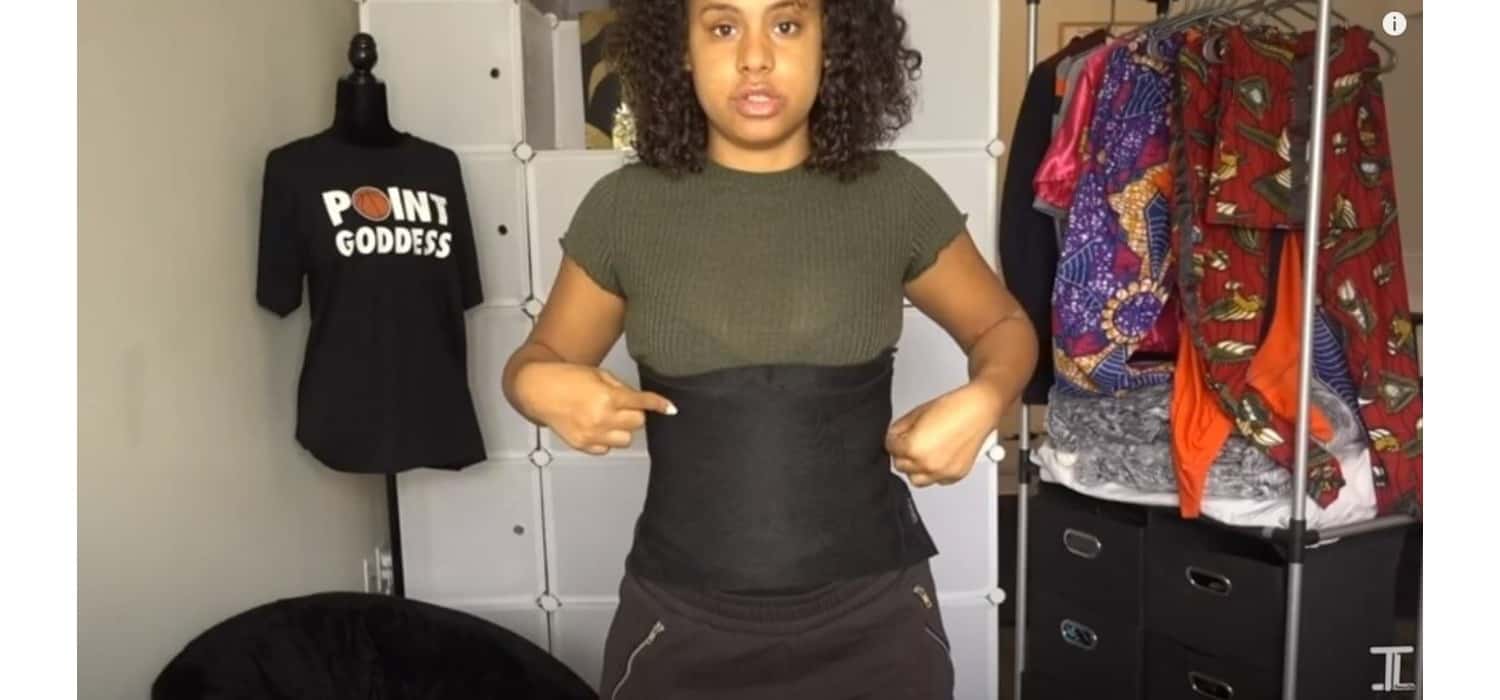Ever notice how celebrities bounce back to shape so quickly post-pregnancy? Think Kylie Jenner. The secret? Waist training. But, not all of us can shell out big bucks for high-end trainers. Here’s the good news: you can DIY a waist trainer at home. This guide will show you how, with just a few household items. Say goodbye to expensive brands and hello to a slimmer waist on a budget.
To make a DIY waist trainer, massage vitamin E oil on your stomach, wrap it with a plastic sheet or cling wrap, wear it as long as comfortable, and then exfoliate with sea salt after removal. Simple, inexpensive, and effective.
Choosing Your Materials
- When it comes to DIY waist training, the choice of materials is crucial. Elastic fabric like spandex or neoprene is your best bet. Why? They’re flexible, durable, and provide the snug fit necessary for effective waist training.
- But, don’t forget about boning. Steel boning is optional but recommended for structure. It prevents your waist trainer from rolling up and enhances its shaping capabilities. Consider using plastic boning for a more flexible option.

- For closures, hook and eye tape or a zipper will work wonders. They make your waist trainer adjustable and easy to put on and take off.
- Lastly, think about comfort. A lining fabric can prevent irritation and ensure the waist trainer feels comfortable against your skin.
Taking Accurate Measurements
- Now, let’s talk about measurements. This step is critical. Accurate measurements ensure your waist trainer fits just right – not too tight, not too loose.
- First, measure your natural waist. Subtract 1-2 inches for a snug fit that cinches but doesn’t suffocate. Remember, your waist trainer should support, not restrict your breathing.
- Next, measure your torso length from under the bust to the top of your hip bone. Add an extra inch or two here for comfort.
- And don’t forget about the width. Measure at the smallest and widest points of your waist to determine the shape of your trainer.
- Start by wearing your DIY waist trainer for short periods. Gradually increase the time as your body adjusts. And always, listen to your body. If it’s uncomfortable, make adjustments.
These steps will set the foundation for a successful DIY waist training journey. Remember, the key to waist training is consistency and using materials that work for you. Let’s move on to crafting your waist trainer. How would you like to proceed with the next sections?
Constructing Your Waist Trainer
- Crafting your waist trainer starts with the fabric. Cut it according to your measurements. Remember, accuracy is key. This fabric will wrap around your waist, so it should be comfortable and durable.
- Next, let’s talk boning. If you chose to include steel boning, it’s time to cut and insert it into your waist trainer. Boning channels can be made by sewing narrow fabric strips onto your main fabric. Ensure these are evenly spaced to avoid any uneven pressure points.
- Sewing the waist trainer together is where it all starts to take shape. Place the front and back pieces right sides together, and sew along the sides. This is when your waist trainer goes from flat fabric to a three-dimensional garment that wraps around your body.
- Adding grommets is crucial for a lace-up waist trainer. Space them evenly along the back edge. They should be set securely to withstand the tension of lacing.
- Finally, lacing your waist trainer. You can use a strong ribbon or cord. Start from the top and work your way down, ensuring it’s snug but not restrictive.
Alternatives and Modifications
- Not keen on using traditional materials or methods? No problem. There are several alternatives and modifications to consider.
- For a no-sew option, consider repurposing an existing garment. An old stretchy dress or tank top can be cut and layered to create a makeshift waist trainer. This method is less durable but can be a good starting point.
- Adjustability is key for a waist trainer that grows with you. Instead of fixed closures, use velcro strips. They allow for easy adjustments as your waist size changes.
- For those looking for an eco-friendly option, consider sustainable fabrics like organic cotton or bamboo. These materials are not only better for the environment but also gentle on your skin.
- Comfort modifications are also important. Adding a soft fabric liner can prevent chafing and increase comfort. This is especially useful for those with sensitive skin.
- Lastly, let’s not forget aesthetic customization. Dye your waist trainer, add patterns, or sew on embellishments to make it uniquely yours. This step is all about personalizing your waist trainer to match your style.
Conclusion
Embarking on the journey of making a DIY waist trainer can be an empowering venture. It not only allows for customization to your specific measurements and preferences but also provides a cost-effective alternative to off-the-shelf products. Through careful selection of materials and precise construction techniques, you can create a waist trainer that supports your body-shaping goals while ensuring comfort and safety.
In conclusion, whether you’re a seasoned DIY enthusiast or new to homemade projects, crafting your waist trainer is a rewarding challenge. It combines creativity, precision, and a touch of personal flair to create something uniquely yours. Remember, the key to successful waist training is consistency, patience, and a well-made trainer that suits your body and goals. Happy crafting!
FAQ’s
1. Can I make a waist trainer at home?
Yes, creating a DIY waist trainer is possible using materials like elastic fabric, steel boning, and a closure mechanism such as hook and eye tape or a zipper. Ensure it fits snugly to see effective waist shaping results.
2. What materials do I need for a DIY waist trainer?
For a homemade waist trainer, you'll need elastic fabric (like neoprene or spandex), optional steel boning for structure, and a closure system (Velcro, lacing, or zipper). Choose materials that offer both flexibility and support.
3. How long should I wear my homemade waist trainer daily?
Start with 1-2 hours a day and gradually increase as comfortable. Listening to your body is crucial; never wear it to the point of discomfort or pain.
4. Are there any risks associated with DIY waist trainers?
As with commercial waist trainers, DIY versions can pose risks if too tight, such as restricted breathing or discomfort. Ensure a proper fit and consult a healthcare professional if in doubt.
5. Can waist training provide permanent waist reduction?
Waist training can temporarily reduce waist size and enhance body shaping, especially when combined with a healthy diet and exercise. However, long-term results vary and require consistent use.

I am Sammy and I blog at Live it. Love it. Make it. It is creative lifestyle blog run by best friends H and Sammy. Head over and follow our crafty adventures!






